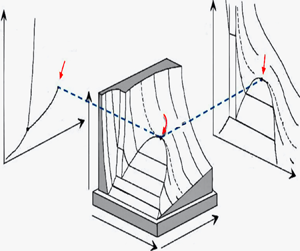Article contents
On the long-time transient formation of sink zones in near-critical fluids. A theoretical perspective
Published online by Cambridge University Press: 29 March 2021
Abstract

Near-critical fluids subject to simultaneous thermal quench and an imposed external acceleration field are reported to develop ‘sink zones’, where the temperature in the bulk falls below the imposed boundary value. This anomalous cooling effect persists for a long period of time corresponding to the diffusive elimination of the cold boundary layer. The sink-zone phenomenon has been captured previously in numerical simulations (Zappoli et al., J. Fluid Mech, vol. 316, 1996, pp. 53–72; Sharma et al., Phys. Rev E, vol. 96, 2017, 063102; Sharma et al., Phys. Fluids, vol. 29, 2017, 126103) and was observed experimentally (Beysens et al., Phys. Rev. E, vol. 84, 2011, 051201). The present work provides a detailed and thorough theoretical analysis and interpretation based on matched asymptotic expansions. By examining the one-dimensional transient flow and temperature with a mean-field approach, we provide further insight into this striking phenomenon, showing that the behaviour involved is unique to highly compressible near-critical van der Waals gases. We also show that the sub-cooling phenomenon cannot be predicted in perfect gases unless very extreme conditions are applied.
- Type
- JFM Papers
- Information
- Copyright
- © The Author(s), 2021. Published by Cambridge University Press
References
- 1
- Cited by



